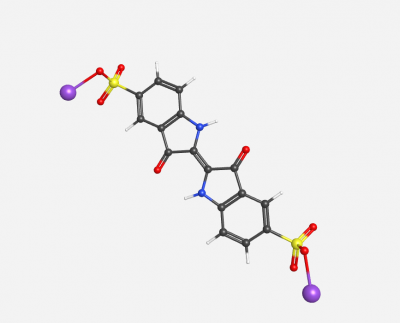Difference between revisions of "Research"
Justin2.1.0 (talk | contribs) |
Justin2.1.0 (talk | contribs) |
||
| Line 8: | Line 8: | ||
Some food dyes might be hazardous in certain quantities to people, therefore it is imperative that these food dyes made by companies are always researched upon and analyzed to make sure that they are being consumed at the right concentrations inside foods that they are mixed with. Using the UV-Vis and the HPLC, analysis of food dyes and discovery of their components at particular concentrations become possible. Indigo Carmine (IC), commonly known as food blue 1 or FD and C blue 2 is a synthetic blue dye that is usually found in cotton candy, icings, blue curacao liqueur sweets, soft drinks and many more. This dye IC has been said to be dangerous in consumable products at certain concentrations and has been known to induce allergic reactions in individuals with pre-existing moderate asthma. Being able to analyze the dye through the HPLC and the UV-Vis we would be able to quantify its abundance in the consumable products that is found around us. | Some food dyes might be hazardous in certain quantities to people, therefore it is imperative that these food dyes made by companies are always researched upon and analyzed to make sure that they are being consumed at the right concentrations inside foods that they are mixed with. Using the UV-Vis and the HPLC, analysis of food dyes and discovery of their components at particular concentrations become possible. Indigo Carmine (IC), commonly known as food blue 1 or FD and C blue 2 is a synthetic blue dye that is usually found in cotton candy, icings, blue curacao liqueur sweets, soft drinks and many more. This dye IC has been said to be dangerous in consumable products at certain concentrations and has been known to induce allergic reactions in individuals with pre-existing moderate asthma. Being able to analyze the dye through the HPLC and the UV-Vis we would be able to quantify its abundance in the consumable products that is found around us. | ||
| + | [[File:IndigoCarmine.png|400px]] | ||
| + | |||
| + | |||
| + | |||
Even though dyes like IC make consumable products look attractive we must be inquisitive about the amount and concentrations that we ingest into our bodies and how frequently that we can in order to have better diets to live healthier lives. | Even though dyes like IC make consumable products look attractive we must be inquisitive about the amount and concentrations that we ingest into our bodies and how frequently that we can in order to have better diets to live healthier lives. | ||
Revision as of 04:46, 4 May 2021
Welcome to the Chemistry Research page. The Chemistry Department believe strongly in "teaching through research." For this reason, our department has acquired a significant amount of research grade instrumentation.
Abstract
This work was mainly to analyze the properties of the food dye Indigo Carmine (IC) for future examination in commercially consumed products. Different concentrations of IC were mixed with water by dilution and all concentrations were measured on the UV-Vis and the HLPC from a stock solution with concentration 3.2e-04 M to 1.005e-05, making five dilutions from the stock. The UV-Vis wavelength was used to determine the molar absorptivity of IC. This will help in its identification when testing for commercial products and with the instruments UV-Vis and HPLC concentrations could always easily be determined. The data also showed how the HPLC was more effective in measuring higher concentrations than the UV-Vis which could only produce smooth graph data under 1.6 absorbance.
Introduction
Some food dyes might be hazardous in certain quantities to people, therefore it is imperative that these food dyes made by companies are always researched upon and analyzed to make sure that they are being consumed at the right concentrations inside foods that they are mixed with. Using the UV-Vis and the HPLC, analysis of food dyes and discovery of their components at particular concentrations become possible. Indigo Carmine (IC), commonly known as food blue 1 or FD and C blue 2 is a synthetic blue dye that is usually found in cotton candy, icings, blue curacao liqueur sweets, soft drinks and many more. This dye IC has been said to be dangerous in consumable products at certain concentrations and has been known to induce allergic reactions in individuals with pre-existing moderate asthma. Being able to analyze the dye through the HPLC and the UV-Vis we would be able to quantify its abundance in the consumable products that is found around us.

Even though dyes like IC make consumable products look attractive we must be inquisitive about the amount and concentrations that we ingest into our bodies and how frequently that we can in order to have better diets to live healthier lives.